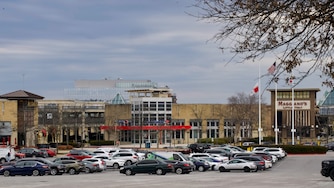Before sundown on a recent Wednesday, about 6,651 cars drove past Anna Mabrey’s house on St. Paul Street, slightly more than the previous week.
She’s not sitting by the window counting, though — a small, plastic box is.
The device, from a Belgian company called Telraam, analyzes passing movement and categorizes what it sees: cars, trucks, pedestrians, bicycles, etc. It counts each type and averages speeds.
Mabrey has been organizing her neighbors around ways to prevent aggressive driving and speeding ever since a driver hit her as she crossed the street just outside her house last year, leading to surgery and months of recovery.
She and her neighbors watch cars and trucks speed down their narrow tree-lined block. Now, Mabrey said, the Telraam is “putting data behind our stories.”
Communities like hers that request traffic-calming measures — things like speed bumps, automated cameras, and so on — generally must wait for costly traffic studies.
Now, more neighborhoods, including Bolton Hill, Johnston Square and Remington, are taking matters into their own hands, turning to Telraam to help make their cases to city government. But Baltimore is one of the only places in the U.S. where the company has a sizable presence, raising the question of whether transportation planners here will trust the data.
The Mount Vernon Belvedere Association, which Mabrey is a part of, pulled funds together for about a dozen devices placed in windows neighborhood-wide. Mabrey said the association analyzes the readings alongside state crash data to identify “hot spots.”
“It’s all hot,” she said.
Democratizing data
Kris Vanherle has used just about every device available to him over his nearly two decades as a traffic engineer in Belgium: drones, pneumatic tubes, handheld counters. They can get pretty expensive, some requiring expertise to use.
So he developed his own device — one that presents raw data in a way that everyday people, not just traffic engineers, can understand.

“We want to foster a discussion between residents and the policymakers,” Vanherle said. “The data is out there. Anyone can check, anyone can verify ... This serves one purpose: to build trust.”
Telraam devices are all over Europe, with the largest concentration in Belgium and the Netherlands.
“It has allowed [us] to defuse a lot of these controversial discussions between policymakers and citizens because now you can start having a conversation on objective data,” not “sentiment,” he said.
In the U.S., only San Francisco and Berkeley, California, have more Telraams than Baltimore. Their affordability, about $234, with subscription plans that unlock more features, makes them available to regular consumers or neighborhood associations, not just governments.
But how accurate is the data?
Multiple traffic engineers — spanning academia and the private sector — contacted for this story had no experience with the devices.
Baltimore’s Department of Transportation doesn’t use them, relying instead on “more traditional” devices for engineering, planning and traffic calming, said spokesperson Kathy Dominick in an email.
The device uses cameras, meaning obstructions like a tree or a large truck parked in its sight line could throw off data. At night, the devices struggle to distinguish vehicle types and aggregate everything into one bulk number.
Traditional traffic and speed studies can be susceptible to irregularities, often taking a snapshot of one or a few days. In 2018, for example, Baltimore’s transportation department implemented changes to downtown signal timing based in part on observations made on the Fourth of July, The Baltimore Sun reported.
Telraam gathers data over an extended period and can be effective in measuring changes before and after a specific project is installed, Vanherle said.
In Remington, residents used a Telraam to measure traffic volumes and speeds before and after the city replaced a car travel lane with a bike lane on 28th Street.
Before the bike lane was installed in 2023, roughly 14% of drivers exceeded 42 mph, fast enough to get a speeding ticket, said Jed Weeks, director of advocacy organization Bikemore and one of the leads on analyzing the data. In the months after, that fell to just 1% of drivers.
Congestion, measured by the number of vehicles traveling 18 mph or slower, has remained just about the same as before the installation, Weeks said, and more pedestrians and cyclists are using the corridor.
Keeping the conversation going
Recently released figures from the National Center for Health Statistics show “harrowing realities” of pedestrian and cyclist deaths in the region, particularly in low-income areas and communities of color, said Seth LaJeunesse, a researcher at the University of North Carolina’s Highway Safety Research Center.
Though road fatalities have come down since last year, so far in 2025, 339 people have been killed on Maryland roadways as of Wednesday, including 67 pedestrians. In Baltimore, 24 people have died, including five pedestrians.
The data shows also that people are simply driving more than they used to, with the rate of “vehicle miles traveled” outpacing population gains, LaJeunesse said.
Though Telraam devices may not be responsible for roadway changes in Baltimore anytime soon, residents using them say their data could be a “catalyst for conversation.”
“Maybe this will keep the conversation going until there’s actually some action,” said Regina Hammond, founder and director of the Rebuild Johnston Square Neighborhood Organization, which wants its own Telraam.
It seems to be working.
Baltimore Councilman Jermaine Jones told state transportation officials at City Hall on Sept. 15 that traffic safety is the “top concern” of his constituents. Jones, whose district includes Mount Vernon and Johnston Square, highlighted his constituents’ efforts to track their own data and their resulting worries.
“It needs to get addressed now and immediately,” he said.



Comments
Welcome to The Banner's subscriber-only commenting community. Please review our community guidelines.